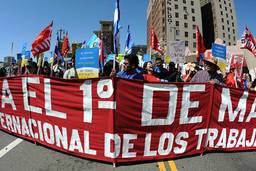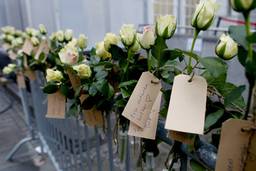Occupation protests across the globe continue into November, garnering press attention through (sometimes violent) confrontations with police and generating questions as to the methods of crowd control used by law enforcement and the structure of the movement’s organization. According to Mother Jones, which has recently posted an interactive map breaking down Occupy arrests all over the world according to city, over 2,000 individuals have been taken in by police since OWS planted the movement’s seed in Zuccotti Park late September. The @OccupyArrests Twitter account set up specifically to keep a running tally today gives the total as 2,976. While some arrests have been peaceable, others have been aggressive and, in some instances, physically threatening. At Occupy Oakland last week, police fired tear gas canisters into a peaceful crowd, striking 24 year old Iraq War vet Scott Olsen in the head. Olsen was hospitalized following the incident, put on a respirator and sedated when doctors discovered swelling in his brain. Today, Democracy Now! reported that Olsen cannot talk but is able to communicate with friends and family using a notepad. Meanwhile, in response to the mollified rhetoric and promises of minimal policing in future from Mayor Jean Quan, the Oakland Police Officer’s Association has issued an “Open Letter” essentially calling out the mayor for flip-flopping on the issue of how Occupy Oakland should be policed, specifically with regard to tomorrow’s looming strike:
The Mayor and her Administration are beefing up police presence for Wednesday’s work strike they are encouraging and even “staffing,” spending hundreds of thousands of taxpayer dollars for additional police presence … All of these mixed messages are confusing.
Also, Denver this last weekend saw the most violent incursion yet of police into the city’s encampment at the City Civic Center—an encampment that has already attracted exaggerated crowd control measures from law enforcement. The most recent crackdown involved Mace and pepper balls—projectiles fired from air guns to disperse protestors. Following a march by protesters, Denver Police tried to tear down some newly-erected tents at the encampment, detained about a half dozen people, and purportedly used rubber bullets on non-violent occupiers. These tactics have opened a discussion on police agencies’ use of force, bringing crowd control methods to the forefront of public scrutiny via the widespread allegations of police brutality in response to the Occupy movement.
Other allegations against the police include the claim that the NYPD has deliberately suggested to homeless people, drug addicts and recently released convicts from Rikers that they join the encampment in Zuccotti Park (a.k.a. Liberty Plaza).If this is true, these tactics point to what Allison Kilkenny refers to as protest sabotage—the attempt to discredit and dismantle the Occupy camp in lower Manhattan by funneling in people who are considered unsavory. Some within the movement, however, decry this police action as a tacit reaffirmation of generalizations that pigeonhole the homeless as undesirable and outside the field of popular concern. As one organizer from Occupy Austin puts it, the homeless themselves are part of the 99 percent. In Atlanta, homeless are helping protestors maintain shelters in their encampment while occupiers are helping to prevent a nearby homeless shelter from closing. However, protesters are aware of unaffiliated individuals taking advantage of some Occupy camps’ amenities. The encampment in lower Manhattan is seeking ways to distinguish between uncommitted freeloaders and legitimate participants when it comes to food distribution, opening debate on the movement’s structure and policies. Other recent occurrences have thrown light onto the efficiency of the Occupy movement’s self-policing. Occupy Portland recently witnessed an accusation of sexual assault, and rumors are circulating around Zuccotti Park about similar allegations (rumors that right-wing opponents of the movement have been quick to seize on, as Josh Harkinson notes.)While recent police activity certainly exacerbates the capacity of OWS encampments to efficiently self-police, these new developments are disturbing and highlight a significant, though uncompleted, goal underpinning the 99 percent movement.As I wrote here on 13 September, the liberation of public space would allow for protestors to engage in alternative modes of social organization. If OWS wants to present its self-governance as a viable method of direct democracy, meaningful internal security that safeguards against and actively targets behavior such as sexual harassment is an absolute imperative.
Patrick Glennon is a writer and musician living in Chicago. He received his B.A. in History from Skidmore College and currently works as Communications Manager for the Michael Forti for Cook County Court campaign and as the web intern at In These Times.



